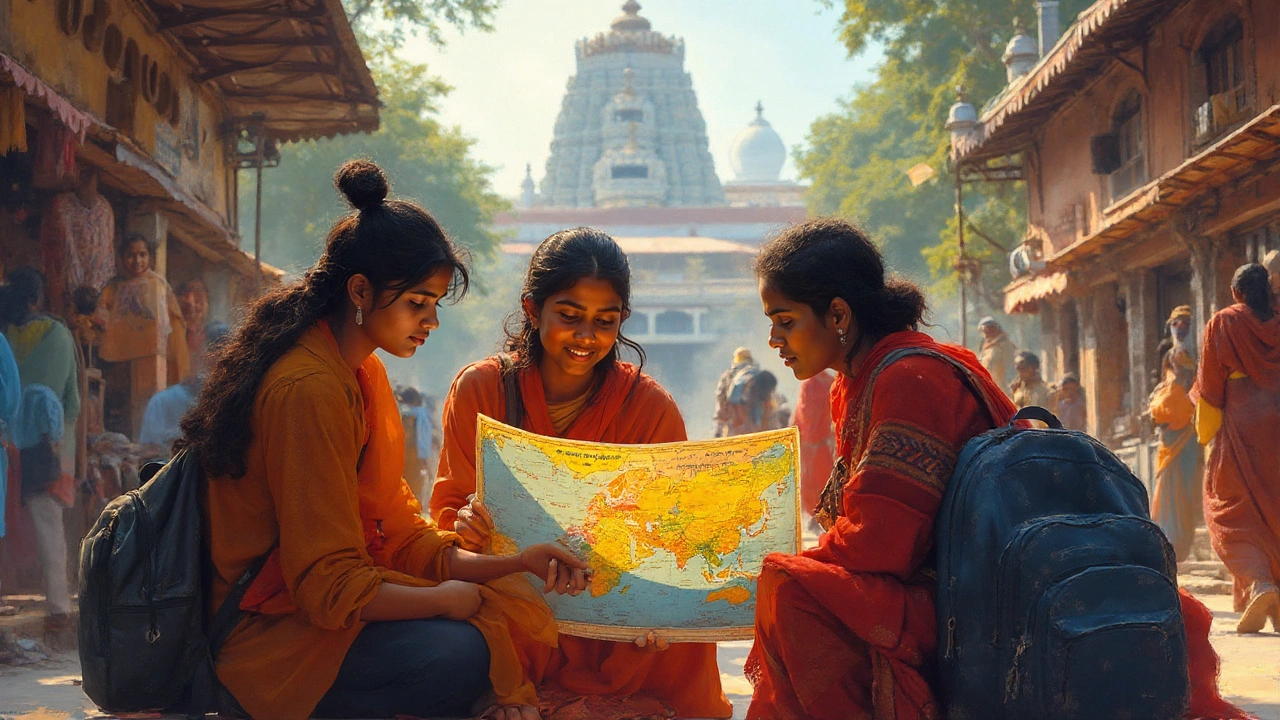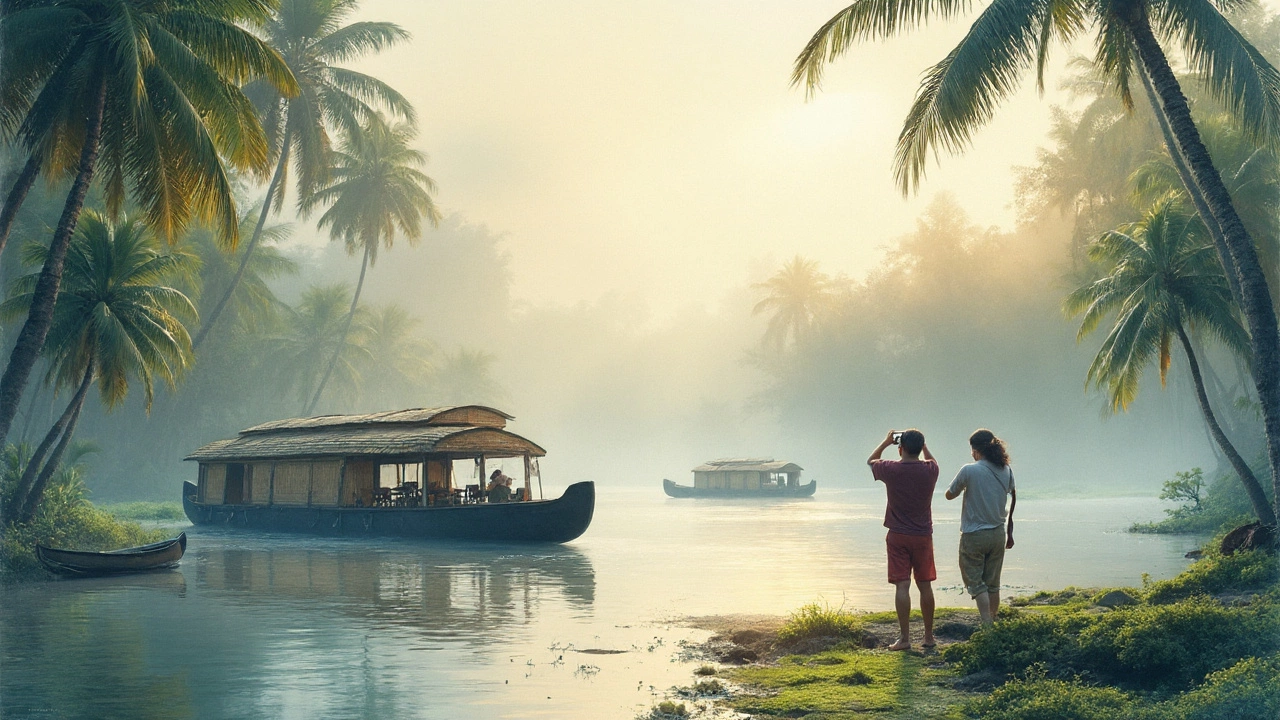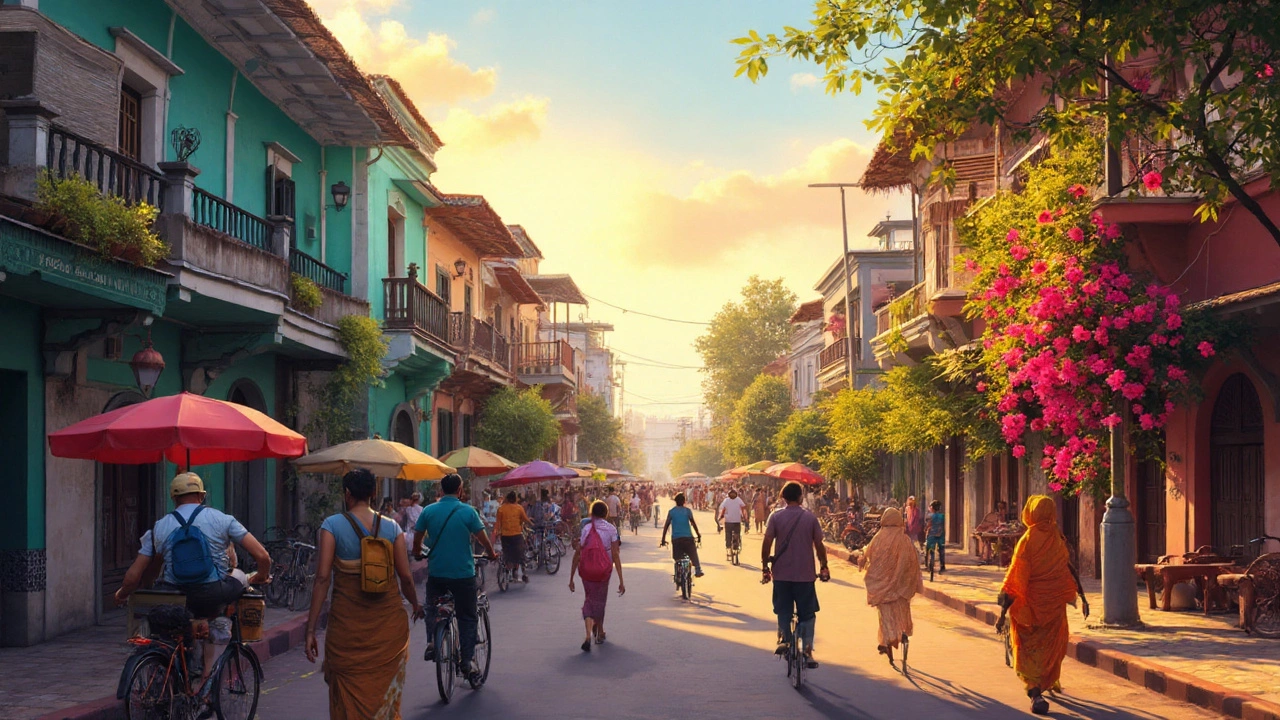How to Plan a South India Trip: Ultimate Guide for Unforgettable Adventures
 Aug, 6 2025
Aug, 6 2025
South India feels like a secret adventure hiding in plain sight. The further you head away from the typical Taj Mahal route, the deeper things get: spices that wake you up, temples so ancient they're basically time machines, and palm-lined beaches that could straight up belong in your wallpaper collection. Yet planning a South India trip trips up more folks than you’d think. The distances, the variety, the regional quirks — it’s a chess game, not checkers. Missing just one piece and the whole holiday can turn into a sweaty bus-bound slog, or you’ll leave feeling like you barely scratched the surface. Want the real deal instead of a canned, tourist-trap experience? You’ll want to play this trip smart, not just scatter pins on a digital map.
Figuring Out Where to Go and When to Visit
Don’t let those Instagram travel reels trick you — South India is massive, and squeezing in everything “worth it” is impossible in a single trip unless you have a few spare months. So, first thing: get honest about your priorities. Are you trying to check off UNESCO sites, eat yourself silly on spicy dosas and filter kaapi, chase waterfalls, crash palm-shaded beaches, trek misty hills, or cram it all into a head-spinning week? Each state has its own flavor. Tamil Nadu is a living museum of temples, giant gopurams, and Carnatic music. Kerala is dripping in green — backwaters, tea hills, and Ayurvedic massages galore. Karnataka gives you world-class ruins, royal palaces, and a food scene that doesn’t get enough love. Try Andhra Pradesh or Telangana if you want something off the main path — you’ll get spicy biryani, bustling bazaars, and wild landscapes without fighting selfie-stick crowds.
Climate shapes everything down here. Only a travel rookie books South India during its muggy pre-monsoon months (April-June). The cool trick? Shoot for November through February. That’s post-monsoon — the waterfalls are wild, the hills crisp, and the beaches never better. There’s less rain, but you won’t sweat straight through your T-shirt five minutes after breakfast. Want to stack it with a festival, like Pongal (mid-January) or Thrissur Pooram (April/May)? Do it. You’ll feel like you’ve been dropped into a movie set. But festivals also mean wild crowds, so sort your bookings early. Hate planning? Go during off-peak months — you’ll get deals and quieter sunsets, though storms and humidity may tag along.
Next, realize South India is not a “hit one capital, see everything” kind of place. Even if you fly into a big city like Chennai, Bengaluru, or Kochi, the magic happens way outside those urban sprawl zones. Consider the best spots for your vibe—hills like Ooty, Munnar, or Coorg for peace and nature; Hampi or Mahabalipuram for ruins that turn every sunset into a dreamscape; Goa if you want that mix of Indian vibes and laid-back beaches (yes, Goa is officially west but logistically fits with South India plans); or maybe Andaman Islands for something totally different, if you have the time and budget for an island hop. Families often love Kerala for its mix of wildlife, safe beaches, and slower pace, but solo travelers and couples are equally at home hopping through Karnataka’s heritage route or temple hopping across Tamil country. With this much range, frame your trip around a theme or region — you’ll do so much more than chasing a checklist.

How to Build an Itinerary That Actually Works
Here’s where good trips crash and great trips get born: the itinerary. If you want to avoid running ragged, plan smart. Start with how much time you really have, not what some guidebook says. Two weeks? You can comfortably do Tamil Nadu and Kerala, or focus just on Karnataka plus Goa. One week? Pick a single state — say, the tea hills and backwaters of Kerala or the historic triangle of Hampi-Badami-Pattadakal in Karnataka. Anything less, and you’ll want to home in on a specific area. Mixing too many places just means you’ll spend whole days crawling in trains or buses — fun, but only up to a point.
Lock down your flights first. International travelers usually land in Chennai, Bengaluru, or Kochi. Find the best fare, but also count on local life. Domestic flights inside South India aren’t expensive if you book early—IndiGo, Vistara, and AirAsia connect most mid-sized cities. But here’s the cool part: trains in South India are both a blessing and a curse. They roll through breathtaking scenery and let you nap away a day of travel, but the really scenic lines (like the Nilgiri Mountain Railway up to Ooty) book out months ahead, so get your IRCTC account ready or book with a reputable agent. If you don’t mind splurging, hire a car with a driver — it unlocks remote temples, plantation stays, and viewpoints you’d never find by bus or train. Roads are in decent shape between most major sights (though give yourself margin for those legendary Indian traffic jams). Public buses are dirt cheap and fun in a “hang on for dear life” kind of way, but aren’t made for hauling giant suitcases.
For each stop, a couple of nights is better than dozens of quick hits. The pace here is slow, and you’ll hate yourself for not soaking in the laid-back beauty or missing sunrise tea in the hills because of an early bus. Here’s a sample rhythm: start in Chennai, drift south for the madly colorful temples of Madurai and Tanjore; hit the misty Cardamom Hills for a taste of nature (Thekkady or Munnar), then sink into a houseboat for a backwater cruise in Alleppey; finish on the Kerala coast with Fort Kochi’s blend of colonial history and wild seafood. Want something different? Go inland from Bengaluru for the ancient stones of Hampi and Badami, plus coffee in Coorg. Each spot is a new world, so carve out time to just wander and let things unfold.
If you’re traveling with kids (like I do — shoutout to my daughter, Aria, who still talks about elephant encounters and sunset boat rides), south India is friendly, safe, and loaded with experiences beyond textbook sights. Many places offer hands-on spice farm tours, wildlife sanctuaries (you might spot elephants in Periyar, or wild peacocks around Hampi), and beach days. Just keep plans loose enough to allow for naps, snack breaks, or an extra swim at the pool. If you’re all about food, go where the locals eat — you’ll pay less and remember the taste forever. Filter coffee on a monsoon morning? Non-negotiable. Masala dosa for breakfast, banana leaf thali for lunch, and maybe a fish curry dinner (if you’re coastal and adventurous)? You’ll wish for an extra stomach. Vegetarian? South India is heaven, with more options than you could ever sample.
Most days, start early to dodge the heat and crowds, then unwind as the day gets steamier. Respect local customs — temples have strict dress codes, so carry a lightweight scarf or shawl and skip shorts inside religious sites. South Indian cities come alive at night in restaurants and bazaars; don’t skip the local sweet shops, especially for things like Mysore pak or Kerala halwa. Shopping is wild — handloom sarees in Tamil Nadu, sandalwood carvings in Karnataka, spice bundles in Kerala.

Packing, Budget, and Pro Tips for a Smoother Journey
Packing wrong for South India is the fastest way to kill your mood. It’s hot most of the year, but AC buses and hotels can feel arctic, so layer with a light jacket or shawl. Sandals or comfortable shoes are a must (temples require off-with-the-shoes, so no fancy laces). Since monsoon showers can sneak up anytime till October, toss a quick-dry towel and a sturdy umbrella or rain jacket in your pack. Mosquito repellent isn’t optional. I still remember a sunset boat ride in Kerala where I forgot my spray — Aria was fine, but I ended up a feast for the wildlife instead of seeing it. Sunscreen is just as vital. Every travel blog says it and here’s proof: the southern sun is intense, even when it feels cloudy.
Budgeting in South India depends on your style. Backpacker? A bed in a hostel dorm can be under $10 a night, meals for a few bucks, and buses nearly free. Want comfort? Boutique homestays, classic hill station bungalows, and modern hotels are everywhere, rarely breaking the bank compared to other Asian hotspots. Even a luxury splurge (private backwater houseboat, heritage palace stay, or Ayurveda spa) won’t bankrupt you the way it might up north or in western tourist capitals. Long story short — plan for $25–50 a day if you're frugal, $100 gets you real comfort, and double that puts you in luxury territory. Always bargain for autos and taxis (don’t be shy, it’s the done thing), and check prices before splurging on activities.
Those little details make a world of difference. Internet is widespread but patchy in some rural spots—grab an Indian SIM card at the airport and you’ll be set. Google Maps works, but local advice is priceless; you’ll often find the best roadside eats or hidden temples by simply chatting up your hotel host or a shopkeeper. Avoid booking big tours from airport counters — you’ll pay more for less. Local agents or recommendations will often get you a better deal. And don’t overpack your schedule; part of the magic is rolling with the unexpected: a village festival, a local cricket match, or a mango straight off the tree. Be open, slow down, and take chances on side trips you spot in a hostel lobby or overhear in a crowded chai stand.
South India isn’t always about ticking off landmarks. It’s the riot of colors at a flower market in Madurai, the echo inside an ancient stone corridor, the soothing scent of eucalyptus after a mountain rain, or the soft shock of a coconut falling beside you as you nap in a hammock. People here tend to be warm and curious, and English is widely spoken, but dropping a ‘Vanakkam’ (hello) or ‘Namaskara’ always scores smiles. Above all, plan just enough but leave space for the unscripted. That’s usually where you stumble on the best stories — and for me, those are the memories Aria and I talk about long after we’re home.
If you’re itching to plan your South India trip, start sketching your dream route, but expect it to change (for the better) as you get into the real adventure. Trust your gut, respect the rhythm of each place, and the subcontinent will open up in ways guidebooks never hint at.